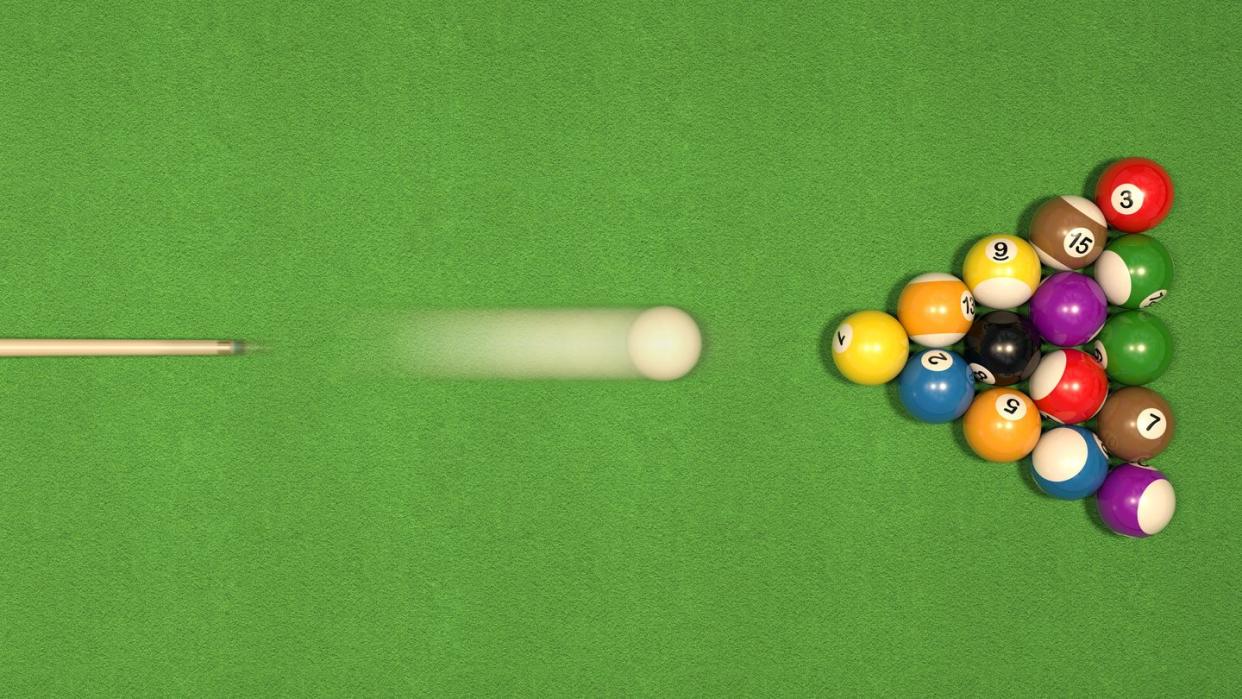Mathematicians Gave a Billiard Ball a Brain—and It Led to Something Unbelievable

Mathematicians from the University of Amsterdam ran an experiment where a frictionless billiard ball was given spatial memory, meaning it never crossed its own path twice.
After running the simulation some 200 million times, such a system revealed a pattern of immense complexity.
While this could help scientists understand some biological functions, it’s perfect conditions and frictionless environment likely wouldn’t occur in nature.
It may not look like it, but slime molds are pretty smart — one was even a “visiting non-human scholar” at Massachusetts’ Hampshire College back in 2017. While lacking anything resembling a brain, the mold Physarum polycephalum navigates toward food sources without revisiting paths it’s already taken. In other words, the mold resembles some form of spatial memory.
This idea of spatial memory is particularly interesting to scientists at the University of Amsterdam, who ran an experiment analyzing the mathematical chaos surrounding an object that remembers the places it’s previously visited. In a new paper published last week in the journal Physical Review Letters, the researchers describe their experimental set-up as an “idealized game of billiards," which assumes that walls are perfectly bouncy and there are no objects other objects on the table other than the frictionless.

But in true slime mold fashion, the mathematicians altered the game by giving the ball spatial memory, meaning it could remember where it traversed and instead bounced against its previous trajectory rather than crossing its path from the past. After running some 200 million simulations using a variety of polygonal “billiard” tables, the team successfully mapped the likelihood of where a ball would eventually get tracked, which surprisingly formed intricate patterns. Zoom in on those patterns, and a particular region revealed yet even more patterns of complexity.
The fate of the ball rests on a bevy of initial conditions, including the shape of the table and its initial trajectory. Without the added parameter of spatial memory, this “idealized game of billiards” (under certain conditions) is a perfect example of mathematical chaos, where initial conditions can not necessarily, but when considering spatial memory, the conclusions have profound implications for biological research, such as Professor Slime Mold.
The concept of trapping is one that begs to be explored, also in real-life systems. For instance, we know that single-celled slime molds use self-avoiding paths. Do they also get trapped, and what happens when they do? Or do they have clever mechanisms to avoid this from happening at all? Do they use it to enhance search strategies for food?,” Mazi Jalaal, a co-author of the paper, said in a press statement. “The results would help us to better understand these biological systems, and perhaps even incorporate the lessons we learn to optimize this form of billiards with memory for use in robots.”
Of course, as one mathematician points out to New Scientist, these simulations don’t mirror biological systems, which tend to not frictionlessly glide along perfectly straight lines, but billiards with “living memory” could be a stepping stone to understanding these systems better.
You Might Also Like
